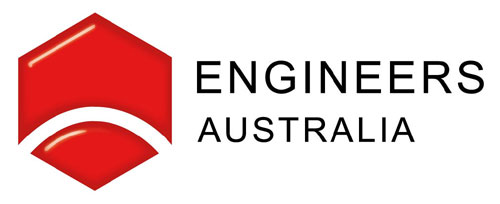ATNAC 2012 7-9th November 2012, Brisbane, Australia

Venue
Traders Hotel : 159 Roma Street, Brisbane, QLD, 4000
Link to venue website
Important Dates
Paper Submission Due : 1st July 2012 29 July 2012
Review Notification : 9th September 2012
Camera Ready Submission : 29th September 2012
First Call for Papers
Five student travel grants available (AUD$500 each)
Submit a Paper
Session best paper authors will be invited to submit a paper to the Australian Journal of Electrical and Electronics Engineering June 2013 special issue on telecommunication networks and applications.
Track List
- 2012 Australasian Telecommunication Networks and Applications Conference (General Track)
- Internet Technologies
- IPv6 mobility and vehicular networks
- Mobile & Wireless Networks
- Optical Communications
- Wireless Sensor Networks
Tracks
2012 Australasian Telecommunication Networks and Applications Conference (General Track)
Upload a paper for this track here
- General topics related to networks and applications
- Broadband Network Management
- Regional and Remote Networks
- Next generation network regulation
- Communication technology fundamentals
Internet Technologies
Upload a paper for this track here
In the current and the envisioned future Internet, a variety of new technologies and applications is emerging. New networking architectures and design concepts are to be developed which consider interactions with the real world, as well as emerging issues like energy-efficiency or socio-economic aspects. A holistic view is necessary which takes into account the network of the Future, the Internet of services, media and enterprise Internet, but also the Internet of Things. However, there are still significant challenges for the theoretical understanding and on the deployment of Internet technologies.
The goal of the Internet technology track is to bring together people from academia and industry and to stimulate discussions on future Internet applications and future wireline and wireless Internet architectures to accelerate their development. We seek papers describing original, previously unpublished research results.
Topics of interest include, but are not limited to:
- Emerging Technologies:
- Virtualization technology and programmability of FI elements
- Service-oriented architectures and service composition
- Future Internet routing schemes or transport concepts
- IPv6 and its derivatives
- Economic Traffic Management
- Mesh networks, ad-hoc networks, sensor networks, femtocells
- Self-configuring and self-optimizing cellular networks
- Dynamic Spectrum Access and Cognitive Radio
- Emerging Applications:
- Content-centric networks
- Social networks
- Multilevel and location-aware mobile services
- Cloud computing
- Software as a service
- Grid computing
- Peer-to-peer networks and overlays
- Multimedia support e.g. vehicle-2-X communications
- Internet governance
- Emerging Issues:
- Energy efficiency and energy awareness
- Network application awareness
- Network management systems and control plane
- Coarse-grained QoS solutions for scalable Future Internet services
- Quality of Experience
- Support of mobility of devices, users, sessions, networks, and services
- Security and privacy mechanism
- Flexibility to realize new innovations
IPv6 mobility and vehicular networks
Upload a paper for this track here
- Mobility management and topology control
- Location-based services and positioning
- Micro and macro-mobility
- Mobility, location and handoff management
- Mobile and wireless IPv6
- IPv6 security
- Wireless broadband mobile access
- ad hoc and sensor networks
- Wireless multicasting
- Wireless mesh networks
- Topology control in wireless networks
- Physical and MAC layer issues
- IPv6 GeoNetworking
- Cross-layer design and optimization for vehicular networks and cognitive networks
- Security issues for vehicular and cognitive networks
Mobile & Wireless Networks
Upload a paper for this track here
The field of mobile and wireless networks is a rapidly evolving area. Recent advances in technologies for emerging mobile and wireless networks, including mobile ad hoc networks, vehicular networks, B3G/4G cellular networks, among others, have the potential to enable many new mobile and wireless services and applications that can profoundly impact our lives in positive ways.
The goal of this track is to provide a forum for the presentation of new advances, ideas, and solutions from theoretical, experimental, and applied research to address specific new challenges and emerging issues concerned with this field. We seek papers describing original, previously unpublished research results.
Topics of interest include, but are not limited to:
- Wireless access and routing protocols
- Cross-layer design optimisation
- Green and sustainable networking
- Nature and bio-inspired approaches to networking
- Network-based mobile positioning and tracking systems
- Cognitive and cooperative principles for networking
- Inter-working, integration, and convergence issues
- Mobile social and ambient networks
- Mobile and fixed wireless broadband access networks
- QoS provisioning and resource management
- Terminal and network mobility
- Traffic engineering, congestion and admission control
- Techno-economic analysis and business models for emerging networks
- Novel network-enabled applications and services
- Networking standards and regulations
- Security and privacy issues
Optical Communications
Upload a paper for this track here
Optical communication technologies will continue to be increasingly important in supporting the future Internet's expected scaling requirements of billions of users,their IT needs and aggregated huge bandwidths. Over the last two decades, optical communication technologies have increased the transmission capacity per fiber by severalorders of magnitude, achieving Tbit/s transmissions. If the data traffic continues to increase at the current progressional rates, a further increase in thetransmission capacity of several orders of magnitude will be needed over the coming decades. This implies that future optical systems and networks should be able tosupport capacities well over Peta bit/s. However, the current technologies have already begun to reveal several fundamental limits; the electronic speed limit, theShannon and quantum limit, and the IP and energy bottleneck. The future technologies must overcome these limits ensuring sustainable growth of network traffic.The optical communications theme aims to provide a forum for the presentation and discussion of significant progress of research,development and applications of cutting-edge technologies in optical communication devices, subsystems, systems and networks.
Topics of interest include, but are not limited to:
- Next Generation Broadband Access Networks, Subsystems and Systems
- Optical Ethernet, EPON/GPON, 10Gb/s Ethernet, 100Gb/s Ethernet
- WDM Access Networks, WDM-PON
- Wired/wireless convergence, Telecom/broadcast convergence, IPTV
- Hybrid optical-wireless access networks, Radio-over-fiber
- Higher order modulations and OFDM in optical access networks
- Fiber-to-the-Home/Fiber-to-the-Curve (FTTH/FTTC)
- Grid/cloud computing over optical networks
- Green Internet
- Next Generation Optical Networks, Subsystems and Systems
- Optical core network architecture, design, control, and management
- Optical cross-connect/add-drop multiplexers, ROADM, and switching subsystems
- Optical packet/burst/flow switching networks and subsystems
- Large capacity optical transmission, WDM, OTDM
- OFDM, higher order modulations and advanced modulation formats in photonics
- Energy efficient optical networks
- Impairments mitigations and performance monitoring techniques
- Digital signal processing in photonics systems
- Free Space optical communications
- Optical Fiber, Components, and Devices
- Fiber design, characterization, fabrication, installation,, and maintenance
- Photonics Crystal fibers
- Polymer/non-silica fibers
- Optical active device and modules
- Optical passive device and modules
- Fiber Bragg grating, fiber lasers/amplifiers, MUX/DEMUX, and demodulators
- Silicon photonics
- Optical MEM
Wireless Sensor Networks
Upload a paper for this track here
The field of wireless sensor networks is now getting more and more mature, but new design concepts, experimental and theoretical findings, and applications continue to emerge at a rapid pace. Furthermore, there are still significant challenges for the theoretical understanding and practical application of sensornetworks.
The goal of the sensor networking track is to bring together people from academia and industry who have interest in the area of wireless ad hoc and sensor networks. We seek papers describing original, previously unpublished research results.
Topics of interest include, but are not limited to:
- Networking protocols: MAC, routing, transport, next generation
- Cooperative communication approaches
- Cross-layer design and optimization
- Broadcasting, multicasting, geocasting
- Quality-of-service, reliability and fault tolerance, coverage and connectivity
- Security
- Supplementary services: localization, time synchronization
- Body sensor networks
- Operating Systems and Software
- Middleware and Macroprogramming
- Information and query processing
- Prototypes, field experiments, testbeds
- Theoretical limits, network scaling
- Novel applications





